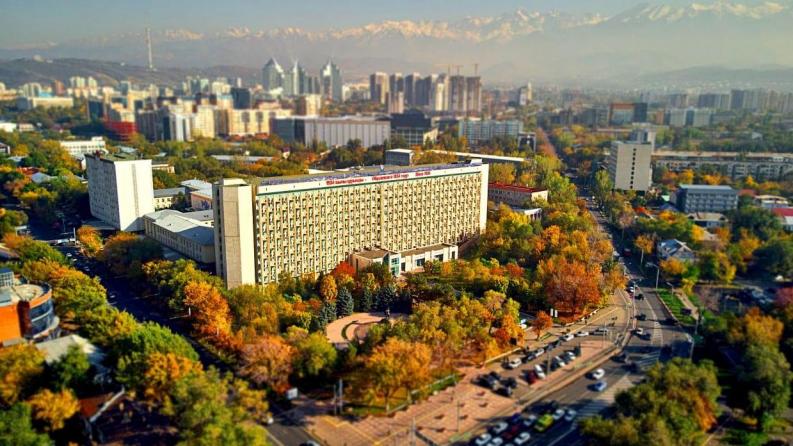Distance education in Kazakhstani universities in the context of a pandemic: challenge or new opportunities

Online learning is a global trend in education consistently implemented by major universities such as Stanford, Berkley, MIT, etc. As for Kazakhstani universities, the situation with total quarantine can become both a serious test of strength and a good opportunity to show their achievements in this area.
Satbayev University is keeping pace with global trends and long before the quarantine announcement, it began introducing distance learning using its own Polytech Online service. At the first stage the service was intended only for those wishing to receive a second higher education, and since autumn 2019 most students of Satbayev University, including the 1st and the 2nd year students, were transferred to the format of blended-learning in mandatory disciplines - a combination of remote format with the classical face-to-face training. In this regard, educational materials have been adapted and introduced for online classes, and many students have acquired mixed-mode skills.
According to Andrey Simonov, Director of the Institute of Distance Education of Satbayev University, for an emergency transition to remote education due to the pandemic (COVID-19) the following measures were done: the capacity of the existing platform was increased, a number of technical objectives were solved as well: particularly, transfer of servers was made, broadband Internet access was organized, some storages were prepared and the system backup mechanism was built, load monitoring tools and instant notification systems were developed and launched. In addition, the AD (Active Directory) account creation module was designed, configured, tested, and launched into the working environment with new mechanisms to improve the security level and encryption to further provide access to cloud services and remote education, load testing of Internet channel and servers were performed. All works were fully completed on 15 March 2020.
This made it possible to increase the number of Satbayev University students and teachers to more than 9,000 people. They were transferred to remote work in record time - in two and a half days The results of the first two weeks of study remotely demonstrated the capabilities of the University and showed readiness for new conditions.
"For our university, the remote form of learning is not a new format, so the transition took place quickly and without special difficulties. Long before all this situation, we already had our own e-learning system - a http://polytechonline.kz/ where materials on all educational programs have been placed. A total of 1,396 disciplines, which in turn are divided into different areas. Within each discipline, the students were distributed into groups with a link to some specific faculty teachers, "- said Andrey Simonov, Director of the Institute of Distance Education of Satbayev University.
Full education with the use of remote technologies is possible only if the proper level of content quality is combined with the service, in which there is convenient navigation between lectures, a clear structure of the educational process and uninterrupted broadcasting of educational audio-video materials. Satbayev University already has a developed base of educational video materials, and at the same time, multimedia content is constantly updated.
"Production of multimedia content is a complex, labor-intensive process comparable to the production of TV series, which includes the definite stages of film production (script, storyboard, shooting, video processing, etc.). For example, one discipline of 15 lectures, with 50 minutes’ average lecture duration takes more than 12 hours of work - almost a whole series. It doesn’t mean just to switch on a camera and that’s all, - comments Andrey Simonov, - we have a team of 10 people who worked on the production of four disciplines and it is without taking into account teaching staff.
The difference between multimedia content and other remote forms of communication between teachers and students is that modern visualization tools such as 3D graphics, video, etc. are used – everything that as interactive as possible makes the material understandable. "
Since the classes are divided into lectures, tutorials and laboratory work, the remote format implies learning both in real-time with teachers and self-study of the material provided. As part of the Polytech Online service, the student has access to lectures and other theoretical materials - tests and home assignments. If necessary, there is always an opportunity to contact the teacher and ask questions about the material covered, to take part in the webinar. The service was originally designed to hold 240 hours of webinars per week.
Together with the internal service, students can use alternative IT tools that provide the effect of presence at lectures and online communication for all participants of the educational process - Microsoft Teams, Skype, Zoom.
Thus, Polytech Online service becomes a virtual audience, giving learners access to education from anywhere in Kazakhstan. At the same time, it is important that students from regions who have gone home during quarantine may not interrupt the educational process, and in case of absence of permanent Internet connection or high speeds, get access to lectures at a convenient time for them.










